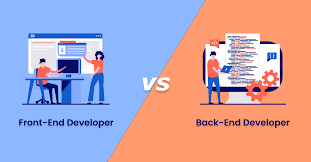
HTML For Newbies
HTML, or HyperText Markup Language, is the foundational language of the web. It is used to create and structure content on the internet, forming the backbone of almost every website you visit. For those new to coding and web development, understanding HTML is the first step toward creating your own web pages and understanding how the web works. This blog will explain what HTML is, how it can be used, and where beginners can learn to master it.
What is HTML? HTML stands for HyperText Markup Language. It is not a programming language but a markup language that uses tags to define the structure and layout of a web document. HTML elements are the building blocks of web pages, and they are represented by tags written in angle brackets
How Can HTML Be Used? HTML is versatile and can be used for a variety of purposes in web development. Here are some common uses:
Creating Web Pages: HTML is primarily used to create web pages. By combining HTML with CSS (Cascading Style Sheets) for styling and JavaScript for interactivity, you can build fully functional websites.
Structuring Content: HTML allows you to structure your content logically. You can define headings, paragraphs, lists, links, images, tables, and more. This helps browsers understand and display your content correctly.
Embedding Media: HTML makes it easy to embed images, videos, audio files, and other media types directly into your web pages. This enriches the user experience and makes your site more engaging.
Forms and User Input: HTML provides form elements like text fields, checkboxes, radio buttons, and submit buttons to collect user input. These forms are essential for tasks like user registration, login, and data collection.
SEO Optimization: Proper use of HTML tags, can improve your website's search engine optimization (SEO). This makes your site more discoverable by search engines like Google.
Where to Learn HTML There are many resources available online to help beginners learn HTML. Here are some of the best places to start:
W3Schools: W3Schools offers comprehensive tutorials and examples for learning HTML. It is an excellent resource for beginners, providing interactive examples and exercises.
Mozilla Developer Network (MDN): MDN Web Docs is a valuable resource maintained by Mozilla. It offers detailed documentation and tutorials on HTML, CSS, and JavaScript, suitable for all skill levels.
Codecademy: Codecademy provides interactive coding lessons that teach HTML step by step. It’s a great platform for hands-on learning.
FreeCodeCamp: FreeCodeCamp offers a free, self-paced web design certification that covers HTML, CSS, and more. It’s an excellent choice for those who prefer a structured learning path.
Coursera and edX: Both Coursera and edX offer online courses from top universities and institutions. Courses like "HTML, CSS, and JavaScript for Web Developers" from Johns Hopkins University on Coursera are highly recommended.
YouTube: There are countless free tutorials on YouTube that cover HTML basics and beyond. Channels like Traversy Media, The Net Ninja, and Academind provide high-quality content for learners.
Books: For those who prefer traditional learning methods, books like "HTML and CSS: Design and Build Websites" by Jon Duckett provide an excellent introduction with visual aids and practical examples.
HTML is the essential building block of web development, and learning it is the first step toward creating your own websites. Its simplicity and readability make it an excellent starting point for anyone interested in coding and web design. With the myriad of resources available online, from interactive tutorials to comprehensive courses, mastering HTML is more accessible than ever. Start learning today, and you'll be well on your way to building and understanding the web.




